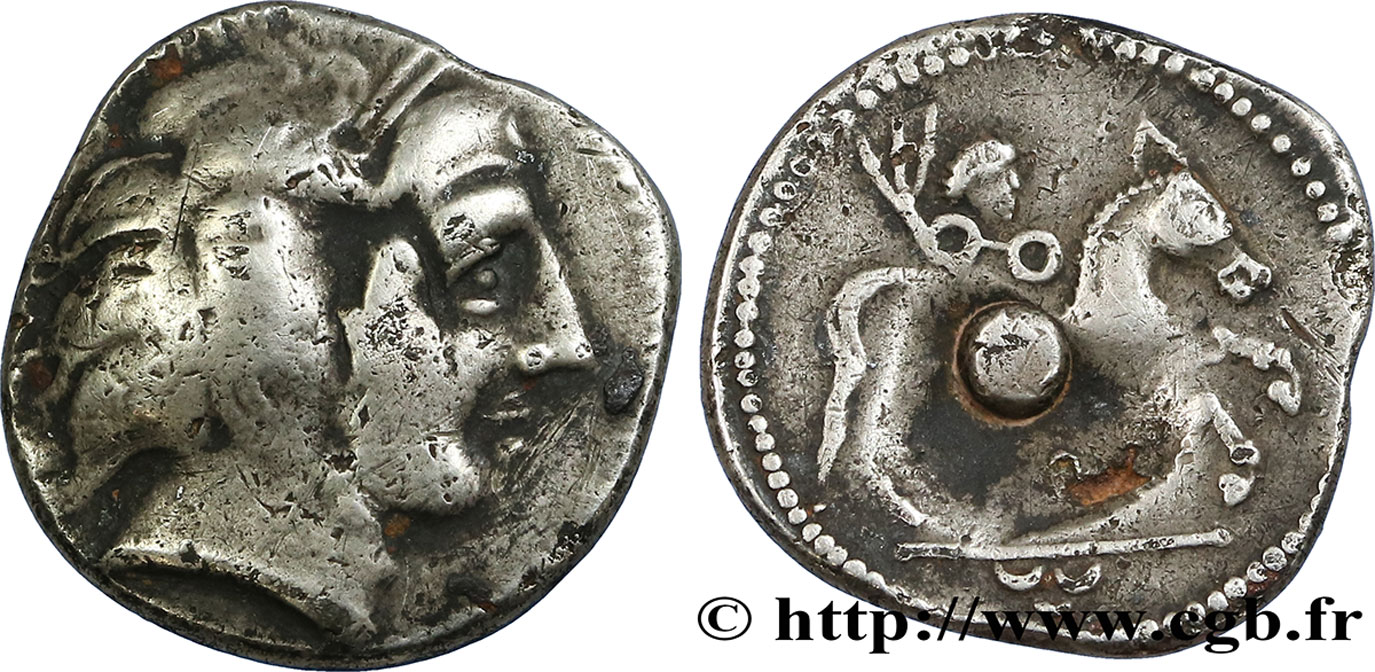bga_373245 - HOARD OF BRIDIERS (CREUSE) Drachme de Bridiers
Not available.
Item sold on our e-shop (2017)
Price : 900.00 €
Item sold on our e-shop (2017)
Price : 900.00 €
Type : Drachme de Bridiers
Date: c. 80-60 AC.
Metal : silver
Diameter : 18,5 mm
Orientation dies : 7 h.
Weight : 3,72 g.
Rarity : R3
Coments on the condition:
Bel exemplaire sur un flan large avec un coup de poinçon (?) au droit et un autre au revers. Un défaut de frappe est à signaler au revers sous le cheval. Patine grise de collection ancienne
Catalogue references :
Obverse
Obverse legend : ANÉPIGRAPHE.
Obverse description : Tête féminine imitée des drachmes d'Emporia, triple pendeloque à l'oreille et collier de perles au cou.
Reverse
Reverse legend : ANÉPIGRAPHE.
Reverse description : Cheval tourné vers la droite, arrêté et relevant fortement la croupe, surmonté d'une victoire très stylisée tenant une couronne, ligne d’exergue.
Commentary
Les revers des monnaies du troisième groupe du trésor de Bridiers sont des imitations des drachmes du comptoir grec d'Emporiæ en zone ibère. Cet exemplaire correspond aux monnaies DT. 3294-3295 avec ce style de tête assez caractéristique.
The reverses of the coins in the third group of the Bridiers treasure are imitations of the drachmas of the Greek trading post of Emporiæ in the Iberian zone. This example corresponds to the coins DT. 3294-3295 with this rather characteristic head style.
The reverses of the coins in the third group of the Bridiers treasure are imitations of the drachmas of the Greek trading post of Emporiæ in the Iberian zone. This example corresponds to the coins DT. 3294-3295 with this rather characteristic head style.








 Report a mistake
Report a mistake Print the page
Print the page Share my selection
Share my selection Ask a question
Ask a question Consign / sell
Consign / sell




